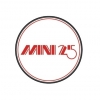Check the ball cage for side wear in the slots, because that is the usual cause of CV joint problems. If the balls are not accurately constrained in one plane, they have two stable states, some deflected inwards, the others outwards, and in that condition free rotation at an angle is not possible. The clicks from a failing CV joint are the balls forcibly being flicked from one side of the slot to the other. Eventually it locks up at an angle at speed, or the cage breaks, and in either case it can get very nasty indeed. If you are very lucky it just spits out all the balls and loses drive, but the one I saw in about 1970 ended up in a moderately nasty crash, with the driver going to hospital. That was an 1100, not very old. Actually, few of them ever became old, as they rusted about as fast as an Alfasud or Lancia Beta.
I experienced one in a Talbot Express van, when the cage, of sintered metal and I suspect inadeqate strength, broke. Suddenly, and with no prior warning such as clicking, the steering was kicking furiously and pulling strongly to the left. It took all my strength to prevent it crashing off the M25 and stopped on the hard shoulder. Had it been the drivers side, pulling to the right, I likely would not be here to write this.
Having said that, catastrophic CV failures seem to be much less common nowadays than they once were, thanks in part to the MOT.
You may also find broken parts, of course, and any pitting on any of the running surfaces or balls means that a new CV is needed, but the usual problem is a worn cage.















